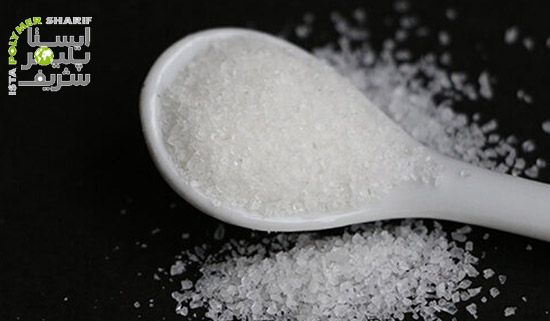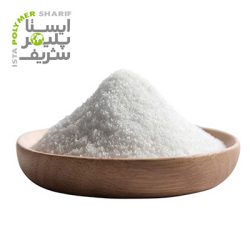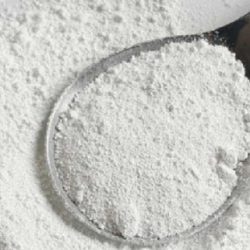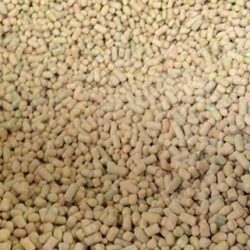Polyacrylamide (PAM) is a polymer with a chain-like and linear structure. This water-absorbing polymer forms a soft gel when hydrated. With a high molecular weight, it is typically used as a flocculant in water and wastewater treatment, a soil conditioner, and to modify viscosity and reduce friction in enhanced oil recovery and high-volume hydraulic fracturing. Due to its unique properties and applications, many wastewater treatment plants have a significant demand for polyacrylamide.
What is Polyacrylamide?
This substance is an organic polymer composed of subunits of acrylamide. Initially produced with a simple, repeating linear chain structure, it can be modified to create highly structured, branched, and cross-linked varieties. This polymer has numerous applications across a wide range of industrial processes. One primary use is in the separation of solids and liquids in municipal and industrial wastewater sectors.
As part of the production process, the ionic characteristics of polyacrylamide can be manipulated to achieve various levels of anionic (negative charge), cationic (positive charge), and non-ionic (minimal charge) qualities. As a general rule, municipal wastes (primary sludge, SAS, and digested sludge) require a cationic polymer system, whereas industrial effluents (tanneries, aggregate washing, and metal finishing) require an anionic treatment. However, exceptions to this rule exist. This product falls under the category of inorganic chemicals.
Both anionic and cationic polymers function through a process called flocculation. The necessary polymer is dissolved in drinking water in an appropriate tank or container at the desired concentration and added to the colloidal matrix. As the polymer solution mixes with the effluent, it binds small particles together to form larger clusters or flocs, which then easily settle out of the solution by gravity, leaving behind a clear liquid.
The higher the molecular weight, the more viscous the polymer solution, and the better its shear resistance. This is particularly important for applications such as centrifuges, where strong mixing forces can break down lower molecular weight polymers, rendering them ineffective. Polyacrylamide manufacturers offer a range of flocculants and coagulants for industrial and municipal wastewater treatment, and can supply this polymer in both powder and emulsion forms, depending on customer preferences.
Properties of Polyacrylamide
Polyacrylamides are high molecular weight polymers that are water-soluble or water-swellable, made from acrylamide or its derivatives. Their glass transition temperature is significantly above room temperature (> 400 K). The only commercially significant PAM is poly(2-propenamide). This non-ionic, water-soluble, and biocompatible polymer can be used for a wide range of applications.
This product increases the viscosity of water and encourages the flocculation of particles in water. The cross-linked polymer can absorb and retain large amounts of water because the amide groups form strong hydrogen bonds with water molecules. In fact, PAM forms a soft gel used in electrophoresis and as a superabsorbent polymer.
The chemical and physical properties of this material include:
- The solid form of PAM softens at temperatures between 220 and 230°C.
- The polymer solution decomposes at temperatures above 110°C.
- It has a high solubility in water.
- It is generally non-toxic, but the presence of monomers with a double bond can be toxic to humans.
- Temperature does not affect its solubility but impacts its viscosity.
- This material is stable in pH levels between 3 and 9, but its viscosity increases at higher pH levels.
Applications of Polyacrylamide
This substance is widely used as a thickening agent, binder, superabsorbent, soil conditioner, filter aid, flocculant, cross-linking agent, suspending agent, lubricant, and oil recovery agent. One of its largest applications is in wastewater treatment. When added to wastewater, it causes suspended particles to aggregate and settle. In both municipal and industrial wastewater treatment, this polymer can be used in all liquid-solid separation processes, including primary wastewater treatment.
Approximately 30% of polyacrylamide is used in the oil and mining industries. It is also used for treating water from mining operations. Another common application is in oil extraction and recovery. When water is injected into a well, polyacrylamide helps by increasing the viscosity of the injected water, pushing the trapped oil in reservoirs toward the pump. Cationic polyacrylamides (CPAM) are used to break emulsions and promote sludge filtration and dewatering.
As a primary organic coagulant, this polymer neutralizes negatively charged colloidal particles, resulting in flocculation and sedimentation, ultimately reducing sludge volume. In paper mills, it is primarily used to increase retention and dewatering. Another minor but significant application of anionic and cationic PAM is in gel electrophoresis for separating macromolecules. When an electric field is applied to a PAM gel, charged proteins (negative) or nucleic acids migrate through the gel toward the positive electrode.
Purchasing Polyacrylamide
Polyacrylamide is used for sludge dewatering in municipal wastewater treatment. Additionally, due to its specific chemical and physical properties, it is extensively used in the oil and mining industries. The ultimate goal of producing this substance is to create flocculants or coagulants to form flocs, which help precipitate unwanted and waste materials in a solution. Therefore, it is important to pay special attention to the seller’s credibility and product quality when purchasing this polymer. If you intend to purchase this product, you can contact the experts at ABtank at 02191309063.







